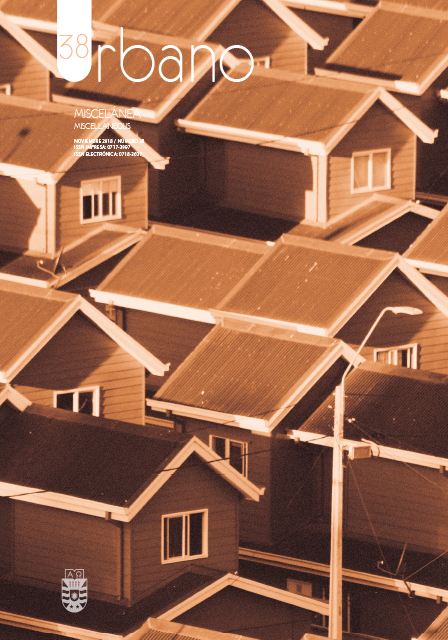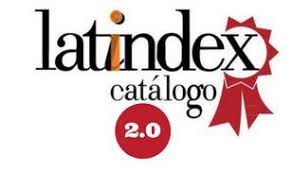Does the future metro line impact the prices of apartments? A study for Ñuñoa and Santiago Chile
DOI:
https://doi.org/10.22320/07183607.2018.21.38.07Keywords:
Hedonic prices, real state attributes, Santiago of ChileAbstract
The research seeks to discuss the impact on the price of new apartments, estimating the effect of the distance to metro stations, from the new line 3. The study will be carried out specifically at the Parque Almagro, Matta and Irarrázaval stations, under the premise that the metro stations generated an anticipated capitalization in the price. Different analyzes are carried out, from the determination of similarity of prices according to their distance to the stations, to the generation of multivariate regressions, hedonic price. It is concluded that in the area there is a measurable impact on the price of the distance to the metro station, expressing itself with a positive factor in the hedonic regression.
Downloads
References
Aguirre, C. (Agosto 2005). Impacto del ruido urbano en el valor de los departamentos nuevos: Un estudio de precio hedónico aplicado a bienes ambientales. Revista de la construcción, 4, 59-69.
Aguirre, C. León, D. (Noviembre 2007). Análisis descriptivo de la evolución urbana de la comuna de Ñuñoa 2001 a 2006. Urbano, 10, 60-72.
Aguirre, C. León, D. (Noviembre 2008). Aspectos causales del precio de departamentos nuevos en la comuna de Ñuñoa, Santiago de Chile. Urbano, 11, 59-67.
Aguirre, C. (Mayo 2008). Impacto en el precio de departamentos nuevos del anuncio de la línea 4 del ferrocarril metropolitano de Santiago de Chile. X coloquio internacional de geocrítica, diez años de cambios en el mundo, en la geografía y en las ciencias sociales, 1998-2008.
Aguirre, C. Marmolejo, C. (2010). Hacia un método integrado de identificación de subcentros a escala municipal: Un análisis para la región metropolitana de Barcelona. Revista ACE n°14, 99-122.
Alonso, W. (1964). Location and land use: toward a general theory of land rent. Harvard University Press, Cambridge, MA.
Azqueta, D. (2007). Introducción a la economía ambiental. España: Mcgraw-Hill Interamericana de España, SL.
Baranzini, A. Ramirez, J. Schaerer, C. Thalmann, P. (2008). Hedonic methods in housing markets. New york, USA: Springer Science+Bussiness media, LLC.
Bateman, I. Day, B. Lake, I. Lovett, A. (2001). The effect of road traffic noise on residential property values: a literature review and hedonic pricing study. Scottish Executive Development Department, Edinburgh, UK.
Brasington, D. Hite, D. (2005). Demand for environmental quality: a spatial hedonic analysis. Regional Science and Urban Economics 35, 57-82.
Bowes, D. Ihlanfeldt, K. (2001). Identifying the impacts of rail transit stations on residential property value. Journal of Urban Economics 35, 57-82.
Cevero, R. Duncan, M. (2004). Neighbourhood composition and residential land prices: does exclusion raise or lower values? Urban Studies, Volume 41 n°2, 299-315.
Ding, C. Knaap, G. (2003). Neighborhoods: The effects of homeownership, housing investment, and economic development. Housing Policy Debate, Vol. 13, Issue 4, 701-727, Fannie Mae Foundation.
Downes, T. Zabel, J. (2002). The impact of school characteristics on house prices: Chicago 1987-1991. Journal of Urban Economics 52, 1-25.
Gonzalez, M. (2000). Preferencias de los individuos por los espacios recreativos: dos aplicaciones en Galicia. Estudio de economía aplicada, n° 16, 93-110, Madrid.
Huang, JC. Palmquist, RB. (2001). Environmental conditions, reservation prices, and time on the marker for housing. Journal of real estate finance and economics 22, 203-219.
Hite, D. Chern, W. Hitzhusen, F. Randall, A. (2001) Property-Value impacts of an environmental disamenity: the case of landfills. Journal of Real Estate Finance and Economics, 22 2/3, 185-202.
Jim, C.Y. Chen, W. (2006). Impacts of urban environmental elements on residential housing prices in Guangzhou (China). Landscape and Urban Planning, 78, 422-434.
Kong, F. Ying, H. Nakagoshi, N. (2006). Using Gis and ladscape metrics in the hedonic price modeling of the amenity value of urban green space: A case study in jinan city, China. Landscape and Urban Planning, en prensa, 1-13.
Lazear, EP. (1986). Retail pricing and clearance sales. The American economic review 76, 14-32.
Marmolejo, C. (2008). La incidencia de la percepción del ruido ambiental sobre la formación espacial de los valores residenciales: Un análisis para Barcelona. Revista de la construcción, Vol. 7, n°1, 4-19.
Marmolejo, C. Skarmeta, E. Aguirre, C. (2012). ¿Los condominios de gran altura generan plusvalías en los edificios vecinos? Análisis de Ñuñoa, Santiago de Chile. Ignire, Centro de estudio de política pública.
McMillen, D. (2003). The return of centralization to Chicago: using repeat sales to identify changes in house price distance gradients. Regional Science and Urban Economics 33, 287-304.
Navrud, S. (2002). The state-of-the-art on economic valuation of noise: final report to the European Commission. Agricultural University of Norway, Oslo.
Palmucci, G. (2005). Capitalización de infraestructura pública en el precio de las viviendas: el caso del metro de Santiago. CChC, Gerencia de estudios, 1-53.
Rosen, S. (1974). Hedonic prices and implicit markets: Product differentiation in perfect competition. Journal of political economy, 34-55.
Simons, R. Saginor, J. (2006). A meta-analysis of the effect of environmental contamination and positive amenities on residential real estate. Journal of Real Estate Research, Vol. 28, n°1, 71-104.
Song, Y. Knaap, G. (2003). New urbanism and housing values: a disaggregate assessment. Property Values in Inner-City. Journal of Urban Economics 54, 218-238.
Tinch, R. (1995). The valuation of environmental externalities. Department of transport, London.
Trivelli, P. (2006). Sobre el debate acerca de la política urbana, la política de suelo y la formación de los precios de la tierra urbana en el Gran Santiago, antecedentes teóricos y empíricos. Santiago: Documento sin editar.
Published
How to Cite
Issue
Section
License
The content of articles which are published in each edition of Habitat Sustentable, is the exclusive responsibility of the author(s) and does not necessarily represent the thinking or compromise the opinion of University of the Bio-Bio.
The author(s) conserve their copyright and guarantee to the journal, the right of first publication of their work. This will simultaneously be subject to the Creative Commons Recognition License CC BY-SA, which allows others to share-copy, transform or create new materials from this work for non-commercial purposes, as long as they recognize authorship and the first publication in this journal, and its new creations are under a license with the same terms.![]()























